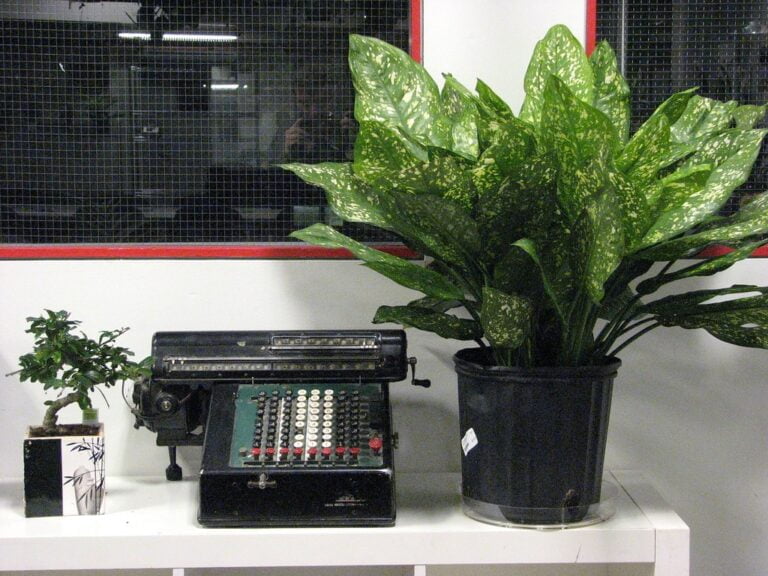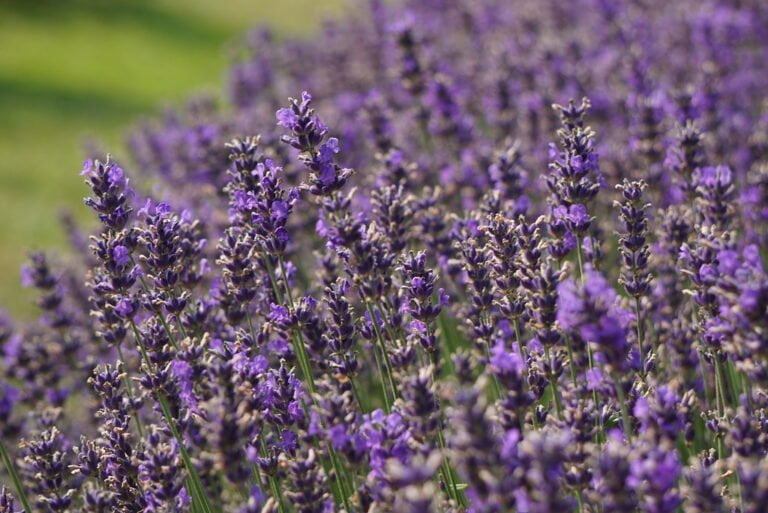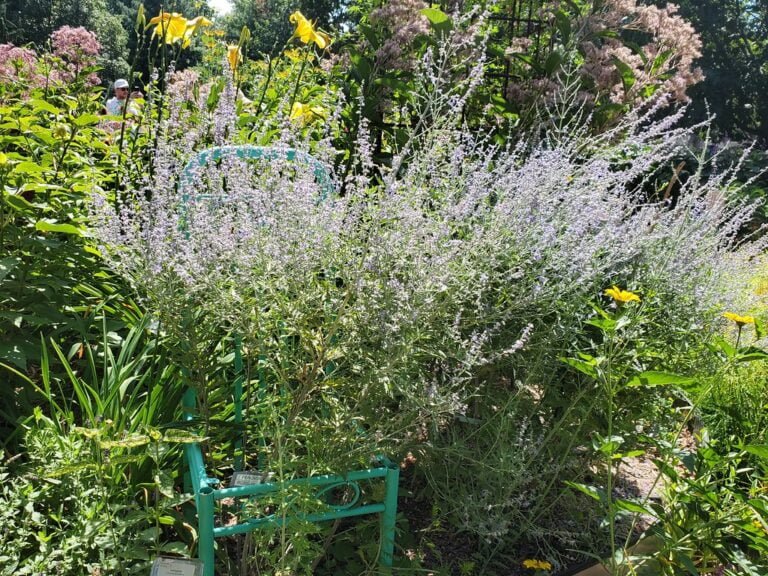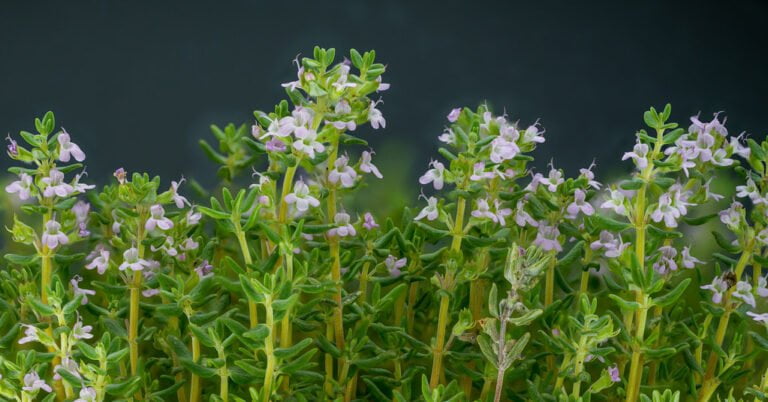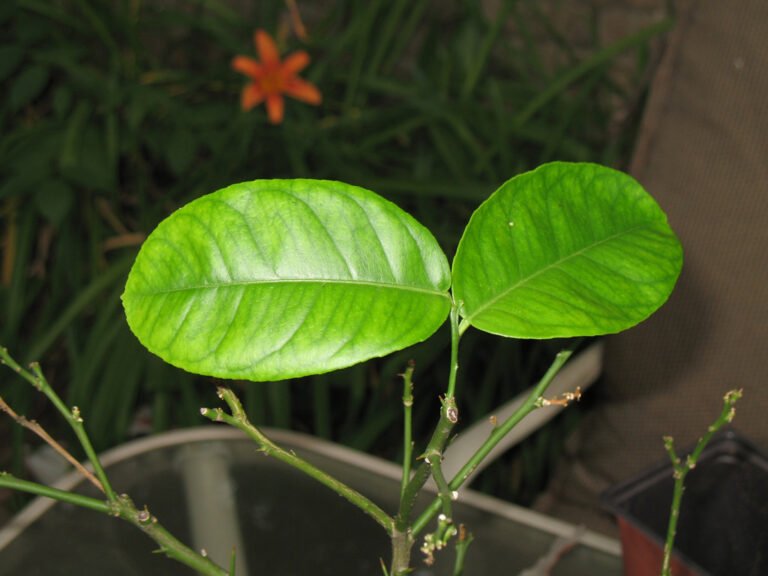The Process of Harvesting Sage: A Comprehensive Guide
Harvesting sage involves precise cuts with sharp scissors just above leaf intersections to promote healthy growth. Different sage varieties like Purple Sage and Tricolor Sage offer unique flavors and colors, enhancing culinary experiences. Timing the harvest just before flowering captures peak essence and taste, especially in late summer to early fall. Preserving sage through drying or freezing guarantees a fresh, flavorful supply for cooking. Consider expanding your herb garden with complementary herbs like thyme and oregano for added variety. Mastering these techniques is essential for tapping into sage’s full potential. My sage harvest guide will help you enhance your culinary creations.
Importance of Harvesting New Growth
When gathering sage, it is crucial to prioritize the fresh growth for its superior flavor and aroma. Fresh growth leaves are like culinary treasures, brimming with essential oils that enrich the taste and scent of dishes. Their tenderness and rich concentration of oils make them the pinnacle of sage quality. I find that regularly gathering this new growth not only benefits my cooking but also stimulates the plant to become more productive, yielding a plentiful supply of leaves throughout the season.
The vibrant color and robust fragrance of fresh growth leaves are unmistakable. Their lush green hue and potent aroma signal their peak flavor potential. By waiting for this fresh growth to reach its prime before gathering, I guarantee that the plant remains healthy and continues to flourish. This approach not only maintains the plant’s overall well-being but also ensures a continuous supply of flavorful sage for culinary creations.
In my experience, focusing on the fresh growth is a strategic way to make the most of a sage plant. By honing in on these tender leaves packed with flavor, I enhance the taste and aroma of my dishes while also supporting the plant’s productivity. Gathering fresh growth is not just a task; it is a fundamental practice that enriches both the culinary experience and the vitality of the sage plant.
Techniques for Cutting Sage
When cutting sage, it’s important to use sharp scissors or shears to guarantee clean cuts. Position your hand carefully to snip stems just above leaf intersections, promoting plant health. Employ precise cutting techniques to capture the herb’s peak essence for culinary or medicinal purposes.
Sharp Cutting Tools
Using precision tools when cutting sage stems is essential for maintaining plant health and flavor quality. Sharp scissors or shears are the best instruments for this task, ensuring a clean cut just above leaf intersections. This technique minimizes stress on the plant, encouraging healthy growth and continuous production of flavorful leaves. The sharpness of the tools plays an important role in the process, reducing the risk of damage to the plant and promoting quick regrowth. By making precise cuts, the sage plant can recover swiftly, enhancing its longevity and ensuring a bountiful harvest in the future. Proper cutting techniques are important in the overall care of the herb, making it a rewarding experience for your growing efforts.
Proper Hand Positioning
Position your hand firmly on the sage stem just above the leaf node for a clean and precise cut. When harvesting sage, this technique is essential for maintaining the health of the plant. By applying gentle pressure and ensuring your fingers are steady, you can prevent unnecessary damage to the organic matter of the stem. Placing your hand in the correct position also allows you to snip off individual leaves without harming the surrounding foliage. Remember, the way you hold the stem influences how the plant regrows, making it important to cut at the right spot. Proper hand positioning not only promotes the vitality of your sage but also contributes to the overall success of growing herbs in your garden.
Clean Cutting Techniques
Placing your fingers precisely on the sage stem just above the leaf node guarantees a clean and efficient cut when harvesting this aromatic herb. To maintain the health of the plant, it’s essential to use sharp scissors for clean cutting techniques. By cutting sage just before it flowers, you secure capturing its peak essence for best flavor in culinary use. Employing precise cutting methods not only benefits your harvest but also aids in the sage plant’s recovery and promotes new growth. Proper snipping of the stems allows for rejuvenation, enabling the plant to produce more leaves for future harvests. Clean cutting techniques are fundamental in gardening to sustain the health and longevity of sage plants, ensuring continued yields.
Different Sage Varieties
Amidst the various assortment offered, Purple Sage shines with its vivid purple leaves, bringing a burst of color to any garden or dish. Tricolor Sage, with its green, purple, and white variegated leaves, not only adds a decorative touch but also enriches the flavor of dishes. Each variety of sage offers unique flavors and aromas, making them versatile ingredients in the culinary world.
When it comes to maintaining these different sage varieties, pruning is essential for keeping the plants healthy and productive. Regular pruning helps in controlling the growth of the sage and stimulates the development of more flavorful leaves.
In culinary use, different sage varieties can be tailored to specific recipes to maximize their distinct characteristics. Purple Sage, for example, adds a pop of color and a slightly peppery flavor to dishes, while Tricolor Sage brings a milder taste with hints of mint and citrus. Exploring recipes that complement the specific qualities of each sage variety can enrich the overall dining experience.
Harvesting Tips for Optimal Flavor
For ideal taste when harvesting sage, timing is essential as it should be done just before the plant flowers to capture its peak essence and taste. To guarantee ideal flavor, using sharp scissors or shears to snip the stems above leaf intersections is vital. This method helps the plant recover quickly and promotes new growth for future harvests. Late summer through early fall is the prime time for harvesting sage, as the heightened aroma and essential oils are at their peak during this period.
When harvesting sage for best flavor, employing proper techniques is key. Gently selecting the healthiest leaves and avoiding any damaged or discolored ones ensures a higher quality harvest. By carefully snipping the stems rather than pulling or tearing them off, you preserve the plant’s health and longevity while ensuring flavorful leaves for your culinary endeavors.
Fresh sage leaves harvested using these tips are perfect for enhancing dishes like sage butter or marinades. Their intense aroma and robust flavor add depth to a variety of dishes, making them a valuable addition to any kitchen. By following these harvesting tips, you can enjoy the full potential of sage’s flavor profile in your cooking.
Preserving Sage After Harvest
To preserve sage after harvest, one effective method involves drying the herb in a dry, airy location away from direct sunlight. Here is a detailed guide to preserving sage:
- Drying: After harvesting sage, tie small bunches together and hang them upside down in a well-ventilated area. Make sure the leaves do not touch each other to prevent mold formation.
- Freezing: Another convenient method is to freeze sage leaves. Wash and pat dry the leaves, then freeze them in labeled airtight containers. Freezing helps maintain the flavor for future use.
- Infuse: Consider infusing harvested sage into oil or vinegar to enrich the flavor profile of your culinary creations. This method not only preserves the herb but also allows you to enjoy its essence in various dishes.
- Storage: Once dried, store the sage in airtight containers labeled with the drying date. Properly stored sage can sustain its flavor and aroma for an extended period, ensuring you have a fresh supply for your culinary endeavors.
Expanding Your Herb Garden
After preserving sage post-harvest, the next step in expanding your herb garden involves carefully selecting additional herbs to cultivate. When considering herb gardening, popular choices like thyme and oregano are excellent options to enrich the variety in your garden. These herbs not only add depth to your culinary creations but also bring a diverse range of flavors and aromas to your dishes.
Enriching your herb garden with different herbs can offer a multitude of culinary benefits. For instance, planting rosemary plants alongside sage can create a harmonious herb garden. Rosemary is a versatile perennial herb that can be harvested by cutting the top one-third of its branches, promoting new growth and ensuring a continuous supply for your kitchen needs.
To guarantee optimal growth, it is vital to plant herbs in well-draining soil to prevent waterlogging, which can be harmful to herb growth. When planning your herb garden, consider the compatibility of herbs when planted together. Some herbs thrive when planted alongside others, benefiting from mutual pest control or improved growth. Remember, good gardening practices such as proper spacing, adequate sunlight, and regular watering are essential for maintaining a flourishing herb garden that will enrich your culinary experiences.
Common Questions About Sage Harvesting
When considering sage harvesting, it is crucial to time the process before the plant blooms to capture its peak essence and flavor. Common sage is a versatile herb with a strong flavor profile that elevates various dishes. Here are some common questions about harvesting sage answered:
- Why is it important to harvest sage before flowering? Harvesting sage before it blooms guarantees that the plant’s essential oils are at their peak concentration, providing maximum flavor for culinary uses.
- How should I harvest sage to maintain its quality? To gather sage, snip stems above leaf intersections using sharp shears. This approach minimizes stress on the plant and promotes new growth for future harvesting.
- What are the best culinary uses for fresh sage leaves? Fresh sage leaves are perfect for creating flavorful sage butter, marinades for meats, or adding a savory touch to soups and stews.
- How can I preserve harvested sage for later use? Drying harvested sage in a dry, airy place away from direct sunlight helps maintain its quality. Store dried sage in airtight containers or freeze it in ice cube trays with water to easily access and use in various dishes.

